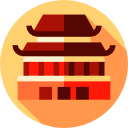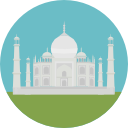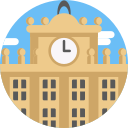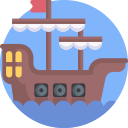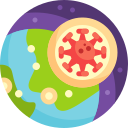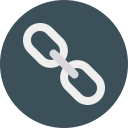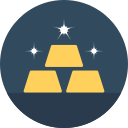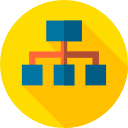Contents
The European Renaissance Reshaped Europe
Main idea
The European Renaissance led to massive social and cultural changes across Europe. These changes in Europe ultimately led to the European age of exploration and conquest, which began a 500-year period in which Europe nations slowly began to dominate the world’s political and economic systems through colonization and empire-building.
The 14th and 15th centuries were centuries of dramatic change across Europe. The Renaissance, which means rebirth in Italian, was a European cultural movement that led to many of those changes.
Major changes included:
The decline of feudalism and manorialism
The increased commercialization of the European economy
The start of European maritime voyages of exploration and conquest
The expansion of European trading connections
What was the European Renaissance?
The Renaissance was a period in European history when Europe “rediscovered” ancient Greek and Roman ideas, literature, art, and culture. The Renaissance began in Italy and then spread to Western and Northern Europe. As Renaissance ideas spread, many northern and western European scholars, artists, and leaders began emphasizing the exploration of knowledge and the human experience.
Humanism: The Renaissance emphasized the pursuit of knowledge and learning as a tool to improve the world and make it a more livable place—this movement was called humanism. Humanists believed in critical thinking and evidence, not superstition and dogma (beliefs claimed to be unquestionably true). Humanists believed education and learning could prepare one for the afterlife and bring one closer to God.
Europe before the Renaissance | Europe after the Renaissance |
|---|---|
Religious dominated life. There was a strong focus on preparing one’s soul for the afterlife. The individual was not important. There was also a limited focus on knowledge and learning. | Humanist thought refocuses on the individual and finding meaning in our lives on earth. There is a renewed focus on learning, especially the Greek philosophical classics. |
Causes of the Renaissance
Several important events inside and outside Europe between the 13th and 15th centuries resulted in the Renaissance.
European wars to expand Christianity further into Europe and to recapture the Holy lands between the 10th and 13th centuries led Europeans to establish new trading relationships with the peoples and civilizations they encountered. These new trading connections allowed for the growth of towns and cities, which allowed Europe to commercialize further. The Crusades also revived interest in ancient Greek and Roman ideas and art through contacts with Greek scholars in the Byzantine empire.
In 1453, the Muslim Ottoman Empire defeated what remained of the Christian Byzantine Empire. This led Greek scholars to spread across Europe. These scholars brought their knowledge of the ancient Greek and Roman civilizations.
Millions died in Europe during the spread of the Black Death starting in the 14th century. à This mass death event caused many people’s outlooks on life to change. Across Europe, there was an increased focus on the individual, human life, and the present. There was a strong emphasis on bettering the human experience and not waiting for life after death to achieve a better existence.
Europeans gained valuable knowledge across Africa and Asia through contact with well-connected Islamic societies. A complex understanding of algebra, geometry, and trigonometry perfected by earlier Islamic scholars allowed Renaissance architects to build complex architecture like free-standing domes. Scholars also combined this mathematical knowledge with astronomical knowledge, allowing Europeans to improve maps and other maritime technologies necessary for the European age of exploration and conquest.
New technological innovations entered Europe and helped Renaissance ideas spread quickly. Papermaking, invented by the Chinese in the 3rd century, entered Europe through Spain in the 11th century. Johannes Gutenberg (1400-1468) developed the European printing press in the 1440s, at the height of the European Renaissance. Gutenberg based his printing press on earlier Chinese printing technology that scholars theorize made its way into Europe through interactions between Europe and Central Asia or Muslims in the Middle East.
The Byzantine Empire | The Islamic world |
|---|---|
Points of contact | Points of contact |
|
|
Knowledge and technology that impacted the Renaissance | Knowledge and technology that impacted the Renaissance |
|
|
The Effects of the Renaissance
The most immediate impacts of the Renaissance were in Europe. However, changes in Europe ultimately impacted the entire world as Europe’s power increased and its influence expanded.
The effects in Europe included:
Europe became less religious
European society became less religious as humanism refocused society on the importance of individuals, not just religion and the afterlife. In the long term, humanism led to the development of human rights and democracy.
Monarchs' power increased
The power of European kings and queens increased as Renaissance thinkers questioned traditional religious authorities like the Pope and the Catholic church.
The growth of nationalism
Nationalism slowly increased as old notions of Greek and Roman citizenship spread, and people began to identify as citizens of nations and not towns, villages, or manors.
European governments grew larger
European kingdoms developed centralized governments with bureaucratic systems. As a result, governments began to take on more responsibility for infrastructure, trade, and the economy.
A growth in literature
As literacy rates increased, writers began to publish in vernacular (local languages and dialects like English, French, or German) instead of Latin, which had been the language of the Church and elite classes.
Artistic advancement
Art flourished during and after the Renaissance. While religion continued to inspire Renaissance artists, increasing amounts of art were non-religious and focused on the individual and the natural world. Many artists produced works in the ancient Greek and Roman styles. Unlike the two-dimensional painting and drawings of medieval Europe, Renaissance artists used depth and perspective to create artwork that was more lifelike and truer to the human form.
Technological innovation
While the Renaissance initially helped kings and queens to become stronger, by the 18th century, Greek and Roman ideas of citizenship and democracy led people to demand limits to monarchs' power. People began to argue that governments were not the personal property of rulers and that they should work for the benefit of individuals and society.
The European Scientific Revolution
Increased focus on knowledge and learning resulted in the first Scientific Revolution in the 16th and 17th centuries. The Scientific Revolution resulted in the start of the Industrial Revolution. New mathematics models led to new financial instruments and trading systems.
The European Enlightenment
While the Renaissance initially helped kings and queens to become stronger, by the 18th century, Greek and Roman ideas of citizenship and democracy led people to demand limits to monarchs' power. People began to argue that governments were not the personal property of rulers and that they should work for the benefit of individuals and society.
The two paintings below are of the Christian Last Supper, just before Roman authorities arrested Jesus. Click through the two versions of the painting. Notice how various changes and advancements made during the Renaissance are present within the second version painted by Renaissance artist Leonardo da Vinci.
While the impacts of the Renaissance for positive for Europe, the longer-term global effects devastated non-European societies.
European conquest of most of the earth’s surface
Europe began to control the global economy
The death of millions of indigenous people from warfare, forced labor systems, and disease
The enslavement and forced relocation of Africans of millions of Africans in colonial economies
Cross-Cultural Interactions Reshaped Europe
Main idea
Europe’s interactions with non-European people and cultures resulted in Europe gaining the knowledge and technologies that allowed them to begin their global maritime explorations and conquests. Many of these technologies initially developed across Asia before passing to Europe through Muslims.
The Renaissance and the start of the European age of exploration and conquest would not have been possible without the technology and mathematical and scientific knowledge gained from Europe’s interactions with other cultures.
Foreign navigation tools allowed Europe to begin maritime exploration and conquest
Navigation tools, primarily acquired through the Islamic world, helped Europe begin its age of exploration and conquest.
The magnetic compass
The magnetic compass works by showing the direction of movement. The earliest compasses originated in China before Muslim traders brought them west. The Europeans first used the compass in Mediterranean trade and voyages from the Mediterranean to the English channel.

The astrolabe
Astrolabes originally functioned as clocks and calendars. The Greeks invented the astrolabe, and the Muslims further developed it. The astrolabe was reintroduced to European through Muslim Spain. The Portuguese created the mariner’s astrolabe by simplifying its design so that mariners could use it to identify a ship’s latitude by using the position of either the sun or a known star.
Astronomical charts
Between the 8th and 15th centuries, Islamic astronomers studied and published a great deal of astronomical knowledge. Much of their work was original but inspired by earlier astronomers like the ancient Greek astronomer and mathematician Ptolemy (c 100 – c. 170).
- Islamic astronomer al-Farghani wrote Elements of Astronomy on the Celestial Motions around 833, in which he wrote about and simplified Ptolemy’s theories on the motion of the stars and planets.
- Another Islamic astronomer Al- Sufi (903-986), wrote The Book of the Fixed Stars in 964, in which he diagramed each of the constellations in the night sky. Later, scholars translated both of these books into Latin, the language of the European elite. Many of the names he gave to constellations in the night sky are still in use.
European astronomers studied these books and created modern star maps. European maritime navigators used these astronomic maps to help them navigate upon unknown waters on long trans-oceanic voyages.

Lateen Sails
Europeans adopted lateen sails from Arab merchants. The sails are triangular, which allows either side to face the wind. Using these sails, mariners can tack into the wind and move forward even when the wind blows against the vessel. This maneuver allowed boats could sail against the winds.

Cartography
Cartography is the making of maps. As European cartographic skills became increasingly sophisticated, European mariners had more advanced sources of geographic information from which to plan their voyages.
Old European qualitative maps: Medieval European maps were not intended for navigation, and many early maps were qualitative maps that mapmakers drew to make statements on specific topics. For example, mapmakers often showed Jerusalem as the center of the world, and this positioning showed the importance of the Christian world and Jerusalem as the birthplace of Jesus.
Prince Henry the Navigator: Prince Henry the Navigator, a Portuguese prince, supported some of Europe’s earliest schools of cartography. He established Europe’s first school for cartography and navigation in Sagres, Portugal.
New mapmaking knowledge: By the 15th century, Europe had learned modern mapmaking techniques from the Muslims and Byzantines. Upon rediscovering the works of the ancient Greek cartographer Ptolemy (90-168 CE), Europe gained a somewhat accurate view of the geography of Afro-Eurasia. Cartographers continuously updated maps using the most up-to-date information and mathematical methods as merchants and explorers, such as Marco Polo, returned from trips with additional geographic details.
New Knowledge and Innovated Ship Design Prepared Europe for Transoceanic Voyages
Main idea
New ships designed for oceanic maritime explorations were built. These ships had innovative features designed by Europeans and features adopted from other cultures.
Improved ship designs and new environmental knowledge also helped Europe to begin transoceanic exploration.
Innovations in ship designs
Innovations in ship design allowed Europeans to travel further and faster across the world’s oceans. New designs produced sturdier vessels that could survive longer voyages across oceans. Engineers also built well-armed boats for armed trade and ships that held larger quantities of goods.
Portuguese caravel: The vessel that launched the European age of exploration and conquest was the Portuguese caravel. The ship used lateen sails and was light, allowing it to sail farther and faster than existing boats. Prince Henry the Navigator sponsored the creation of the caravel to explore the West African coast. Columbus had caravels in his fleet (the Nina and the Pinta) when he first sailed toward the Americas.
Carrack: First designed and used by the Portuguese, the carrack allowed longer-distance trade. The ships were larger and sturdier than the caravel, which made the vessel sturdier and safer in the open oceans. Larger storage capacity increased the profitability of transoceanic commerce. The Portuguese and Spanish used the carracks to cross the Atlantic, conquer the Americas, and establish the spice trade in Asia.
Spanish galleons: Spanish galleons were large, multi-decked sailing ships first used as armed cargo carriers by European states from the 16th to 18th centuries. The ship was heavily armed with multiple cannons on both sides, making these vessels preferable for armed trade or military uses. Over time, these vessels became the first real warships. Galleons could hold more cargo because of their size, further increasing the profitability of European maritime trade. Galleons were also the primary ship transporting enslaved Africans during the trans-Atlantic slave trade.
The Dutch fluyt: The fluyt was the first European maritime vessel specifically designed for maritime trade. First built by the Dutch in 1595, the ships were twice the size of other commercial boats and helped the Dutch dominate international trade from Northern Europe to the Indian Ocean. Fluyts did not carry many large weapons and were operated by a small crew to make room for additional cargo.
Knowledge of wind and sea currents
Increased knowledge of wind patterns and ocean currents also aided European maritime exploration and expansion.
The volta do mar (meaning “turn of the sea” ): The volta do mar is a navigation technique perfected by early Portuguese sailors that used oceans’ natural wind and current circulations to loop themselves between continents. These natural currents are present in all of the world’s oceans.
- This process sometimes required navigators to take ships far from their desired destination on one current or wind stream before looping around and using another to go in the desired direction.
- When Vasco da Gama first traveled to India around Africa’s southern tip, he used the North Atlantic equatorial currents and Northeasternly trade winds to travel west, arriving near Brazil’s coast in South America. He then switched directions and traveled east across the Atlantic Ocean using the westerly winds and South Atlantic currents.

